Mars is littered with 15,694 pounds of human trash from 50 years of robotic exploration
Discarded pieces of landing gear, crashed spacecraft and wear and tear have produced a lot of debris that is now scattered around the Martian surface.
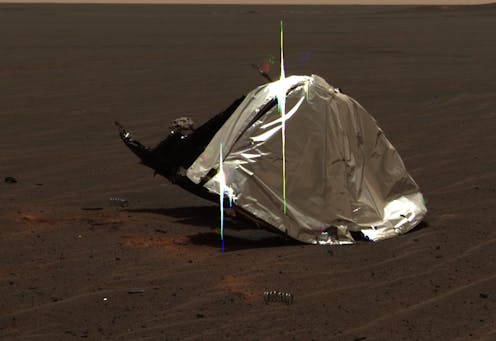
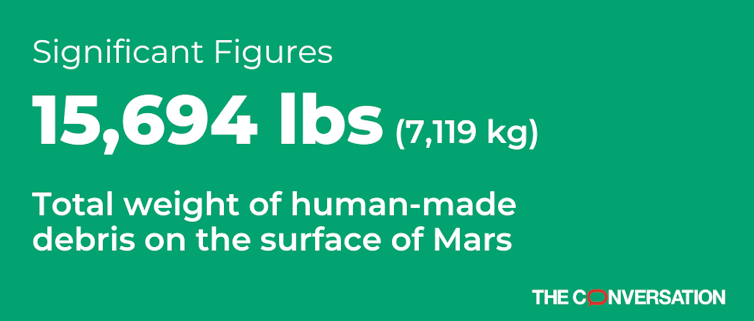
People have been exploring the surface of Mars for over 50 years. According to the United Nations Office for Outer Space Affairs, nations have sent 18 human-made objects to Mars over 14 separate missions. Many of these missions are still ongoing, but over the decades of Martian exploration, humankind has left behind many pieces of debris on the planet’s surface.
I am a postdoctoral research fellow who studies ways to track Mars and Moon rovers. In mid-August 2022, NASA confirmed that the Mars rover Perseverance had spotted a piece of trash jettisoned during its landing, this time a tangled mess of netting. And this is not the first time scientists have found trash on Mars. That’s because there is a lot there.
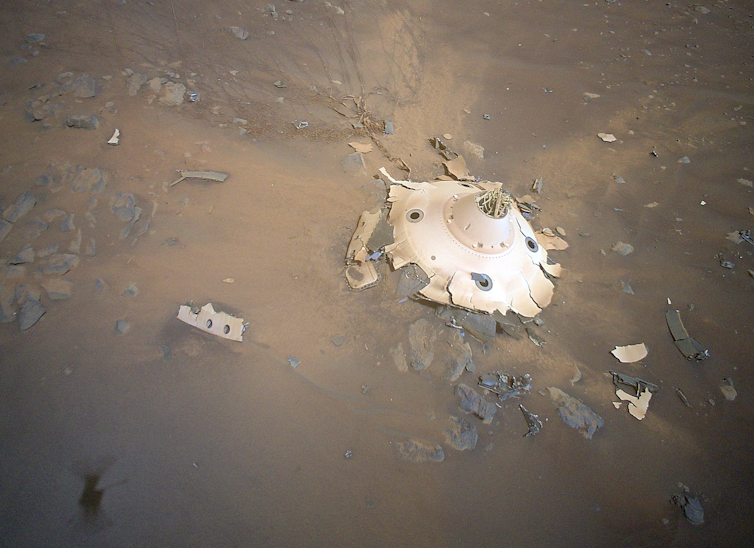
Where does the debris come from?
Debris on Mars comes from three main sources: discarded hardware, inactive spacecraft and crashed spacecraft.
Every mission to the Martian surface requires a module that protects the spacecraft. This module includes a heat shield for when the craft passes through the planet’s atmosphere and a parachute and landing hardware so that it can land softly.
The craft discards pieces of the module as it descends, and these pieces can land in different locations on the planet’s surface – there may be a lower heat shield in one place and a parachute in another. When this debris crashes to the ground, it can break into smaller pieces, as happened during the Perseverance rover landing in 2021. These small pieces can then get blown around because of Martian winds.
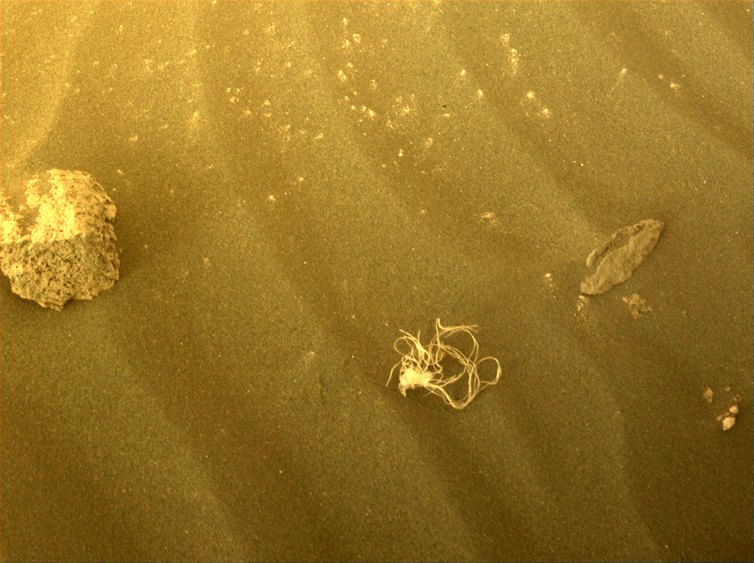
A lot of small, windblown trash has been found over the years – like the netting material found recently. Earlier in the year, on June 13, 2022, Perseverance rover spotted a large, shiny thermal blanket wedged in some rocks 1.25 miles (2 km) from where the rover landed. Both Curiosity in 2012 and Opportunity in 2005 also came across debris from their landing vehicles.
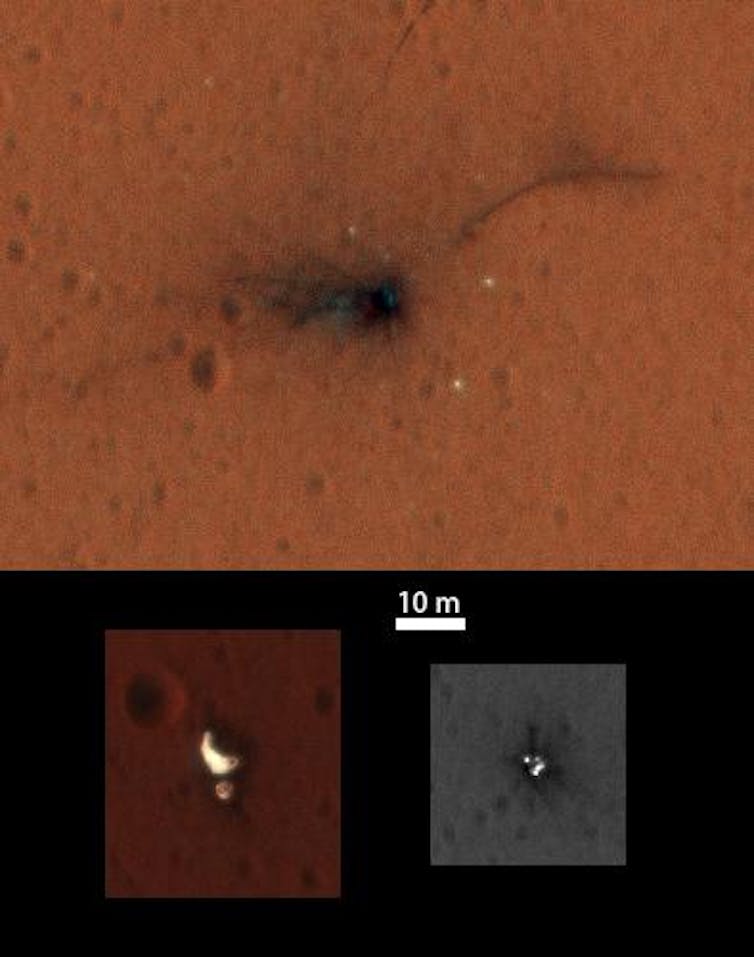
Dead and crashed spacecraft
The nine inactive spacecraft on the surface of Mars make up the next type of debris. These craft are the Mars 3 lander, Mars 6 lander, Viking 1 lander, Viking 2 lander, the Sojourner rover, the formerly lost Beagle 2 lander, the Phoenix lander, the Spirit rover and the most recently deceased spacecraft, the Opportunity rover. Mostly intact, these might be better considered historical relics than trash.
Wear and tear take their toll on everything on the Martian surface. Some parts of Curiosity’s aluminum wheels have broken off and are presumably scattered along the rover’s track. Some of the litter is purposeful, with Perseverance having dropped a drill bit onto the surface in July 2021, allowing it to swap in a new, pristine bit so that it could keep collecting samples.
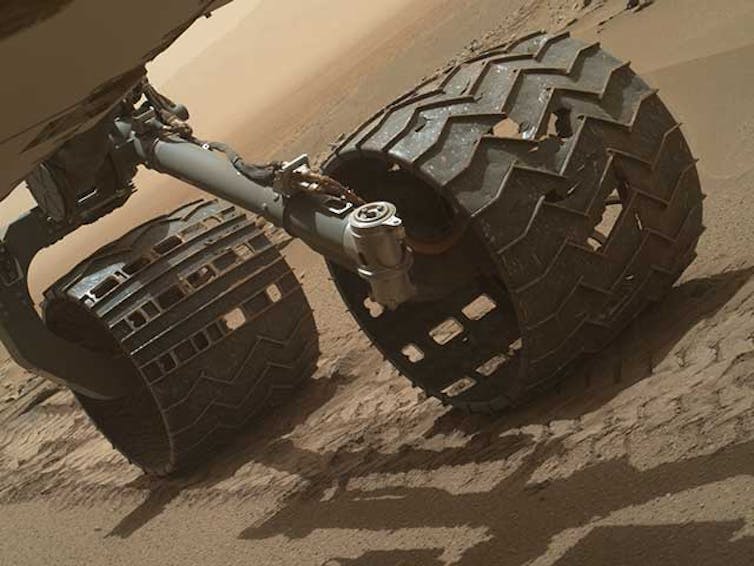
Crashed spacecraft and their pieces are another significant source of trash. At least two spacecraft have crashed, and an additional four have lost contact before or just after landing. Safely descending to the planet’s surface is the hardest part of any Mars landing mission – and it doesn’t always end well.
When you add up the mass of all spacecraft that have ever been sent to Mars, you get about 22,000 pounds (9979 kilograms). Subtract the weight of the currently operational craft on the surface – 6,306 pounds (2,860 kilograms) – and you are left with 15,694 pounds (7,119 kilograms) of human debris on Mars.
Why does trash matter?
Today, the main concern scientists have about trash on Mars is the risk it poses to current and future missions. The Perseverance teams are documenting all debris they find and checking to see if any of it could contaminate the samples the rover is collecting. NASA engineers have also considered whether Perseverance could get tangled in debris from the landing but have concluded the risk is low.
The real reason debris on Mars is important is because of its place in history. The spacecraft and their pieces are the early milestones for human planetary exploration.
Cagri Kilic does not work for, consult, own shares in or receive funding from any company or organization that would benefit from this article, and has disclosed no relevant affiliations beyond their academic appointment.
Read These Next
School shootings dropped in 2025 - but schools are still focusing too much on safety technology inst
Prevention methods like lockdown drills do not account for many scenarios, including the likely case…
The North Pole keeps moving – here’s how that affects Santa’s holiday travel and yours
There are actually two North Poles. One has been wandering over northern Canada and north of there for…
How rogue nations are capitalizing on gaps in crypto regulation to finance weapons programs
North Korea was behind a $1.5 billion digital bank heist in February 2025. Other countries are similarly…




